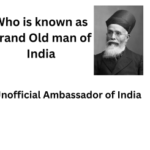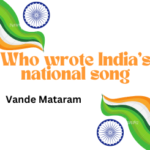INDIA WORLD’S THIRD LARGEST ECONOMY IN TERMS OF PPP: WB

India has displaced Japan to become the world’s third biggest economy in terms of purchasing power parity (PPP), according to a World Bank(WB) report. The 2011 round of the bank’s International Comparison Program (ICP) ranked India after the US and China. The last survey in 2005 had placed the country on 10th place. The survey covered 199 economies. PPP is used to compare economies and incomes of people by adjusting for differences in prices in different countries to make a meaningful comparison, because economies estimate their Gross Domestic Product(GDP) at national price levels and in national currencies, those GDPs are not comparable. To be compared, they must be valued at a common price level and expressed in a common currency.
REFRENCE
PPP: The theory aims to determine the adjustments needed to be made in the exchange rates of two currencies to make them at par with the purchasing power of each other. In other words, the expenditure on a similar commodity must be same in both currencies when accounted for exchange rate. The purchasing power of each currency is determined in the process. Let’s say that a pair of shoes costs Rs 2500 in India. Then it should cost $50 in America when the exchange rate is 50 between the dollar and the rupee.
WORLD BANK: Since inception in 1944, the World Bank has expanded from a single institution to a closely associated group of five development institutions. It evolved from the International Bank for Reconstruction and Development (IBRD) as facilitator of post-war reconstruction and development to the present-day mandate of worldwide poverty alleviation in close coordination with its affiliate, the International Development Association (IDA), and other members of the World Bank Group, the International Finance Corporation (IFC), the Multilateral Guarantee Agency (MIGA), and theI nternational Centre for the Settlement of Investment Disputes (ICSID). The World Bank Group is headquartered in Washington, D.C. W.
The World Bank Group five institutions are managed by their member countries. The IBRD lends to governments of middle-income and creditworthy low-income countries. The IDA provides interest-free loans—called credits— and grants to governments of the poorest countries. The IFC, a member of the World Bank Group, is the largest global development institution focused exclusively on the private sector.It help developing countries achieve sustainable growth by financing investment, mobilizing capital in international financial markets, and providing advisory services to businesses and governments. The MIGA was created in 1988 as a member of the World Bank Group to promote foreign direct investment into developing countries to support economic growth, reduce poverty, and improve people’s lives. MIGA fulfills this mandate by offering political risk insurance (guarantees) to investors and lenders. The ICSIDprovides international facilities for conciliation and arbitration of investment disputes.Reconstruction remains an important part of WB work. However, at today’s World Bank, poverty reduction through an inclusive and sustainable globalization remains the overarching goal. Jim Yong Kim , is the current President of World Bank Group






0 Comments